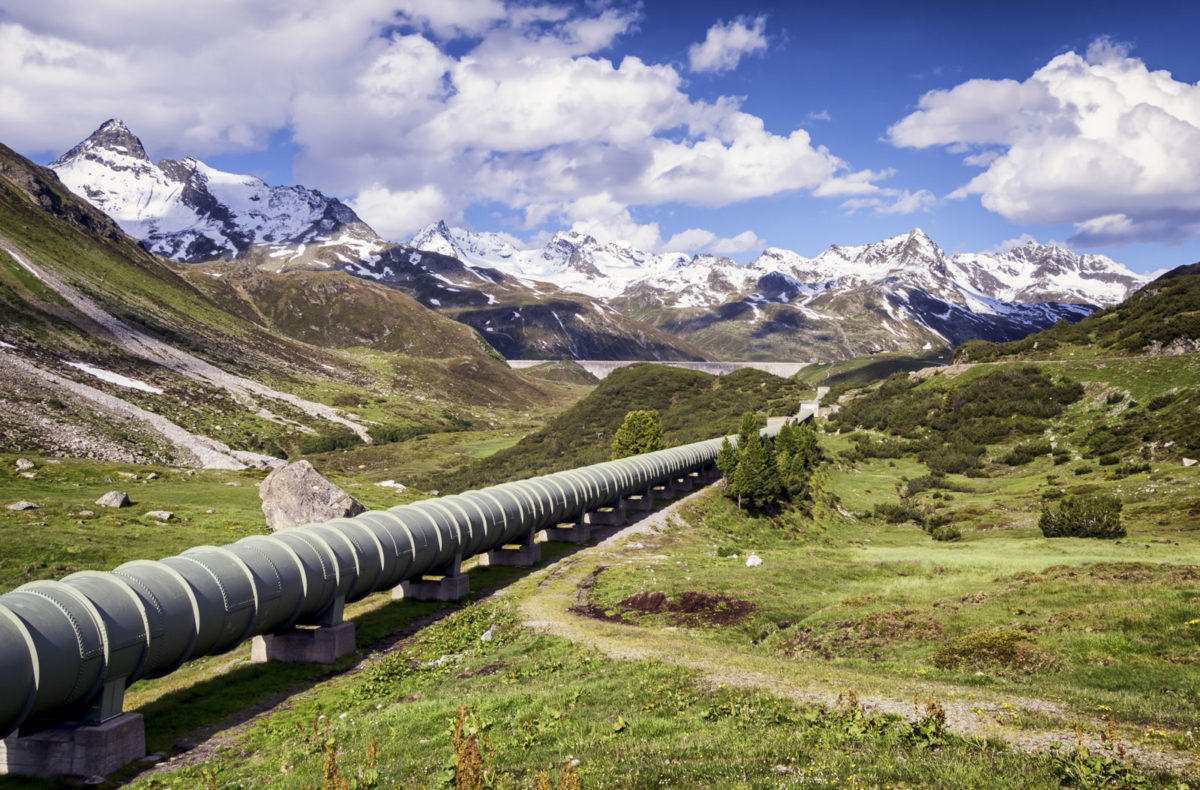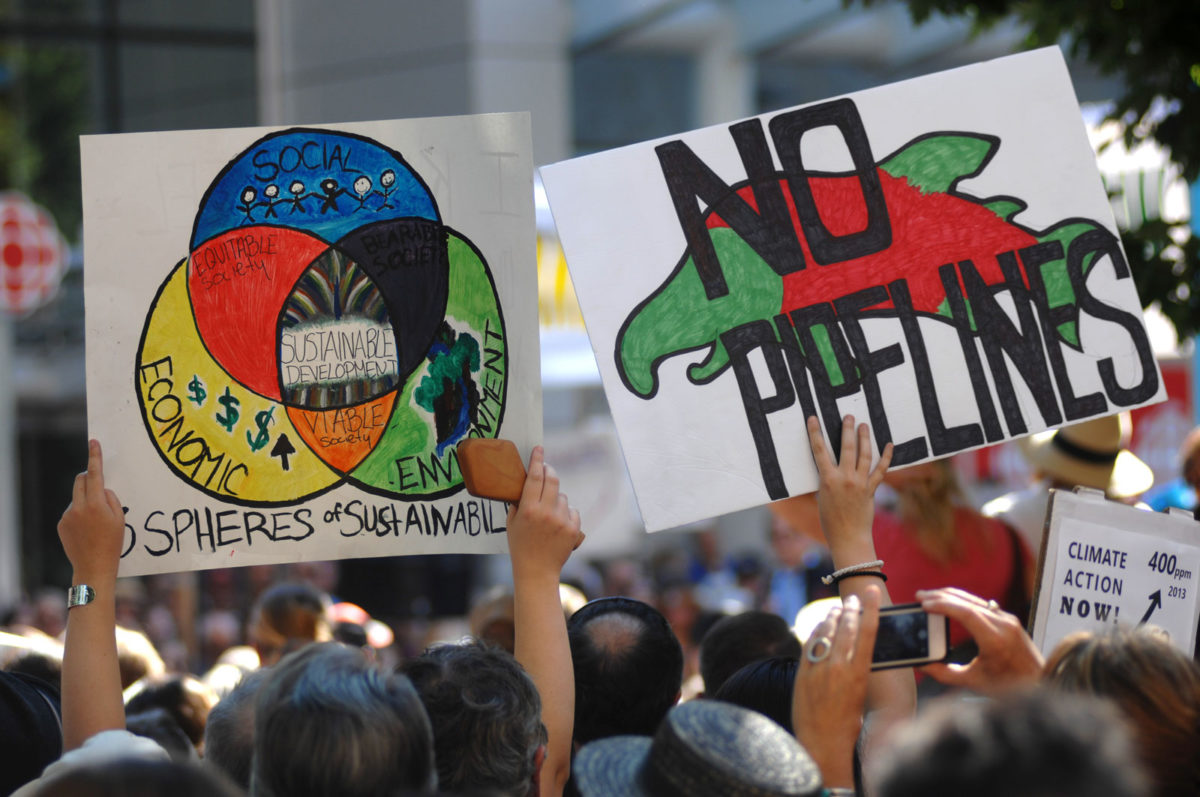CELDF is helping the first communities in the country to prohibit pipelines. Below learn about the dangers of pipelines, the ways in which communities are organizing to stop them, and what you can do in your community.
Gas pipelines cut across private and national lands that are rich in biodiversity and wildlife habitat, and often cut through farms and populated communities as well. Pipelines threaten aquifers and drinking water sources, contaminate soil, risk explosions, pollute the air through the release of methane and the potential release of radioactive radon and other toxic gases, as well as threaten local ecosystems.
A bird’s eye view of America reveals gas supply pipelines stretching out like veins, weaving from coast to coast. Some pipelines cut through vast ecosystems; others slice through the backyards of communities. The nation’s energy transportation network includes more than 2.6 million miles of pipeline operated by about 3,000 companies. [1] Harm is done to communities and ecosystems not only in the building of these pipelines, but in subsequent functioning and maintenance. Numerous instances of corrosion, weld failures and other malfunctions have disrupted natural habitats and rural communities. Further, these gas supply lines ruin property values and aesthetics.
The development and expansion process for pipelines can be lengthy. First, the energy transportation company conducts what the industry terms “open season exercise.” Depending on the level of interest, the project moves forward, is canceled or placed on hold. If the pipeline moves forward, the development phase begins. After filing with the regulatory authority, the project is approved, canceled or amended. Assuming the project is approved, the pipeline is then put in place. It is through this process that communities can take action to stand up for their rights and draft ordinances establishing the rights of people, nature and communities over those of the energy company constructing the pipeline.
Why Does it Matter?
Over time, natural events disrupt human-made infrastructure such as pipelines. Corrosion is among the most common causes of the 10,884 reported accidents from 1995 to 2015.[2&2a] One relatively short pipeline in Ivel, Kentucky, has had eleven corrosion failures as of 2004.[3] Leaks are a concern as well, as a piece of the existing Keystone Pipeline sprung a dozen leaks in its first year of operation.[4] Even if pipelines were perfectly maintained and if natural disasters such as landslides and earthquakes could be mitigated, communities are still at risk.
Human error and negligence are common problems. Equipment malfunction, weld failures and incorrect operation, along with improper monitoring and maintenance, are among the most common causes of pipeline accidents.[2&5] Further, pipeline manufacturers have purposefully constructed pipelines up to 15% weaker than specifications call for.[6]
Pipeline accidents risk ecosystems, people, and property. When explosions occur – as at least 80 did in 2012[5] – people can be hurt or killed, and surroundings damaged. Ultimately, it is up to a community to decide if the risk of facilitating a gas supply pipeline is acceptable. Community rights are violated when townsfolk are not the ones determining whether or not a pipeline is allowed to cut through populated or biodiverse areas.

A Risk to Communities
Over the years, numerous pipeline accidents have led people to rethink the risks of nearby pipelines.
- In rural Appomattox, Virginia, two homes were leveled and 100 were damaged following a Williams Partners pipeline explosion caused by undetected corrosion.[7] Five people were injured, three with severe burns.[8]
- A high pressure gas pipeline exploded in San Bruno, California, a suburb of San Francisco. The blast destroyed 38 homes and damaged 120 homes. Eight people died and 58 were injured. Fire spread across ten acres of brush.[5]
- A pipeline rupture in Carlsbad, New Mexico, killed 12 people and left a 51-foot-wide crater in the ground.[5]
- Between 1986 and 2012, in Texas alone, gas pipeline accidents have led to 371 injuries and 78 deaths.[5]
A Risk to Nature
Millions of miles of pipeline slice through the country, much of it cutting through national forests and fragile ecosystems. With each mile, there is an increased chance of natural disaster. At least 20,000 miles of the nation’s pipeline system lies in “high consequence areas,” placing communities and wildlife under severe risk. [9]
In an analysis of pipeline accidents triggered by natural hazards, geological hazards led to 37% of the onshore pipeline accidents analyzed. This is followed by meteorological (29%), hydrological (14%), and climatic (14%) hazards. Landslides accounted for nearly half of geological incidents (nearly one-in-five pipeline accidents), while earthquakes represent just over 3% of total pipeline accidents.[10] There are harms to local ecosystems by energy transportation companies as they move highly volatile and dangerous products across farm land, forests, protected habitat, rivers, aquifers and more. Accounts of pipeline spills and disasters are in no short supply:
- In 2010, a crude oil pipeline ruptured near Marshall, Michigan, spilling over 840,000 gallons of oil into the Kalamazoo River. Nearly 4,000 animals and 320 people were sickened as the oil poisoned 35 miles of wetlands and waterways.[11]
- In 2013, an ExxonMobil pipeline carrying Canadian Wabasca heavy crude from the Athabasca oil sands ruptured in Mayflower, Arkansas, causing 22 homes to be evacuated.[12] The U.S. Environmental Protection Agency classified the leak as a major spill – in all, the area was polluted with 5,000−7,000 barrels of crude oil – up to 294,000 gallons.[13]
- In 2012, nearly 3,000 barrels of sour crude oil leaked from an oil pipeline and into a creek flowing into the Red Deer River, located north of Calgary in Alberta, Canada.[14]
Constructing Polluted Soil
Many pipelines cut through land set aside for agriculture. The very construction of these pipelines put communities – particularly children – at risk of pollution from heavy metals. Cadmium, considered one of the most eco-toxic metals and extremely harmful to humans, pollutes nearby soil from the welding of pipelines and from contaminated construction materials. Copper, nickel and lead have also been found in soil near pipelines, likely from vehicle traffic, mechanical wear and the burning of oil.[15]
Severe buildup of heavy metals in agricultural soils affects food quality and safety, increasing incidences of cancer, leukemia, reproductive disorders, and kidney or liver damage of people exposed to soil pollution.[15]
Decreased Property Values
Pipeline construction and maintenance can cause property values to plummet. Properties on a pipeline’s route can be listed as unsellable, uninsurable and are therefore unable to be mortgaged. [16] Initial construction of a pipeline can require large areas of a property to be cut open. Gas companies are under no obligation to repair damages. Many residents find that the scarring of the landscape from installing a pipeline, along with the risk of a flammable substance flowing through their private property, damages the land’s value. [17]
An Expanding Industry
In recent years, America has dramatically increased its oil and natural gas production through hydraulic fracturing, or fracking. By injecting a mixture of water and chemicals into high pressured wells deep underground, gas is obtained through shale deposits. With a higher volume of gas and oil being extracted locally, the need to ship resources through pipelines is mounting.
The industry has grown by 25% in the past decade, while only major projects like the Keystone Pipeline are debated.[18] Although the Keystone Pipeline – the proposed tar sands pipeline which would cut through the heart of the country – hasn’t yet been approved, the oil and gas industries have quietly built other pipelines across America. These pipelines are smaller in size, but together, they have five times the potential capacity of the Keystone Pipeline. [18]
A Leaky Keystone XL
Two Environmental Impact Statements have been released by the State Department regarding the tar sands pipeline. Both were written by companies with financial dealings with TransCanada, Keystone XL’s owner. Both times the companies failed to disclose their conflicts of interests.[19]
Even more holes have been found in the pro-pipeline argument. TransCanada has admitted their leak detection system can’t be relied upon to detect pinhole leaks,[4] such as the leak which caused the 63,000 gallon spill in Canada in 2011.[20] The detection system can only discover leaks larger than 700,000 gallons of oil a day,[4] meaning an undiscovered three week spill could contaminate a half-mile long portion of the nation’s largest underground water source – the Ogallala Aquifer.[20] Several small leaks could release 1.7 million gallons a day without triggering the detection system.[20] These leaks are not uncommon. In its first year of operation, one existing stretch of the Keystone XL (going through the eastern Dakotas) sprung a dozen leaks.[4]
Your Community Can Take Action
Growing numbers of communities are realizing that zoning laws, regulations, and environmental impact studies do not safeguard the places where people live, or local ecosystems. These rules, regulations, and studies make it appear as if communities are taking action to protect themselves. In fact, though, this is no more than illusion. None of these legal hoops recognize communities’ rights to make governing decisions, and do nothing to stop the harm from coming in.
CELDF works with communities and local governments to draft local laws that stop the invasion of pipelines through neighborhoods, forests, and farm fields. We help communities to rethink the issue, shifting from seeing the problem as a need for stronger regulations, to understanding that it is only through challenging corporate claimed “rights” and state preemption – which force pipelines into communities – that they can assert their rights to local self-government, and the right to clean air, pure water, and healthy soil.

Take action. Stand up to Pipelines.
CELDF is working with communities in Oregon, Ohio, New Hampshire, and Pennsylvania to stop pipelines and protect rights. If you or your community is threatened by a pipeline, or trying to stop a pipeline from being established where you live, contact CELDF. You and your community have rights, and CELDF is here to help you fight for them.
Sources
[1] http://www.phmsa.dot.gov/pipeline/inspections
[2] Restrepo, Carlos E., Jeffrey S. Simonoff, and Rae Zimmerman. “Causes, Cost Consequences, and Risk Implications of Accidents in US Hazardous Liquid Pipeline Infrastructure.” International Journal of Critical Infrastructure Protection 2.1-2 (2009): 38-50. Web.
[2a] https://hip.phmsa.dot.gov/analyticsSOAP/saw.dll?Portalpages
[3] http://kftc.org/sites/default/files/docs/resources/bluegrass_pipeline_handout_website_version.pdf
[4] http://blogs.ei.columbia.edu/2011/10/10/what-are-the-keystonexl-pipeline-risks-tohttp://www.snopes.com/photos/accident/gasmain.asp-water-resources/
[5] http://fracdallas.org/docs/pipelines.html
[6] http://primis.phmsa.dot.gov/lowstrength/index.htm
[7] http://www.snopes.com/photos/accident/gasmain.asp
[8] http://www.fireengineering.com/articles/2013/03/-lessons-learned–pipeline-emergency-response-at-2008-appomattox.html
[9] USA. National Transportation Safety Board. Integrity Management of Gas Transmission Pipelines in High Consequence Areas. 27 Jan. 2015. 21. Web. <http://www.ntsb.gov/safety/safety-studies/Documents/SS1501.pdf>.
[10] “Analysis of Pipeline Accidents Induced by Natural Hazards: Final Report.”ResearchGate. N.p., n.d. Web. 28 Aug. 2015.
[11] Emmanuel, Adeshina, “Preventable Errors Led to Pipeline Spill, Inquiry Finds,” New York Times, 10 July 2012. Web: 21 Apr 2014. http://green.blogs.nytimes.com/2012/07/10/preventable-errors-led-to-pipeline-spill-inquiry-finds/?_php=true&_type=blogs&_r=0
[12] http://www.reuters.com/article/2013/04/03/us-exxon-pipeline-spill-idUSBRE92U00220130403
[13] http://insideclimatenews.org/news/20130405/exxon-oil-spill-could-be-40-larger-company-estimates-epa-figures-show
[14] “Alberta Pipelines: 5 Major Oil Spills in Recent History.” http://www.cbc.ca/news/canada/alberta-pipelines-5-major-oil-spills-in-recent-history-1.3156604. N.p., n.d. Web.
[15] Shi, Peng, Jun Xiao, Yafeng Wang, and Liding Chen. “Assessment of Ecological and Human Health Risks of Heavy Metal Contamination in Agriculture Soils Disturbed by Pipeline Construction.” International Journal of Environmental Research and Public Health IJERPH 11.3 (2014): 2504-520. Web.
[16] http://conestogacommunitygroup.org/wp-content/uploads/2014/09/PipelineBrochure_0914_Print_Final.pdf
[17] http://www.clevescene.com/scene-and-heard/archives/2015/05/18/medina-county-auditor-says-nexus-pipeline-will-reduce-property-values
[18] http://ecowatch.com/2015/03/23/pipeline-network-dwarfs-keystone-xl/
[19] http://www.westernfrontonline.net/opinion/article_a7ad14ee-933e-11e3-b4c8-0017a43b2370.html
[20] http://switchboard.nrdc.org/blogs/aswift/the_keystone_xl_tar_sands_pipe.html
